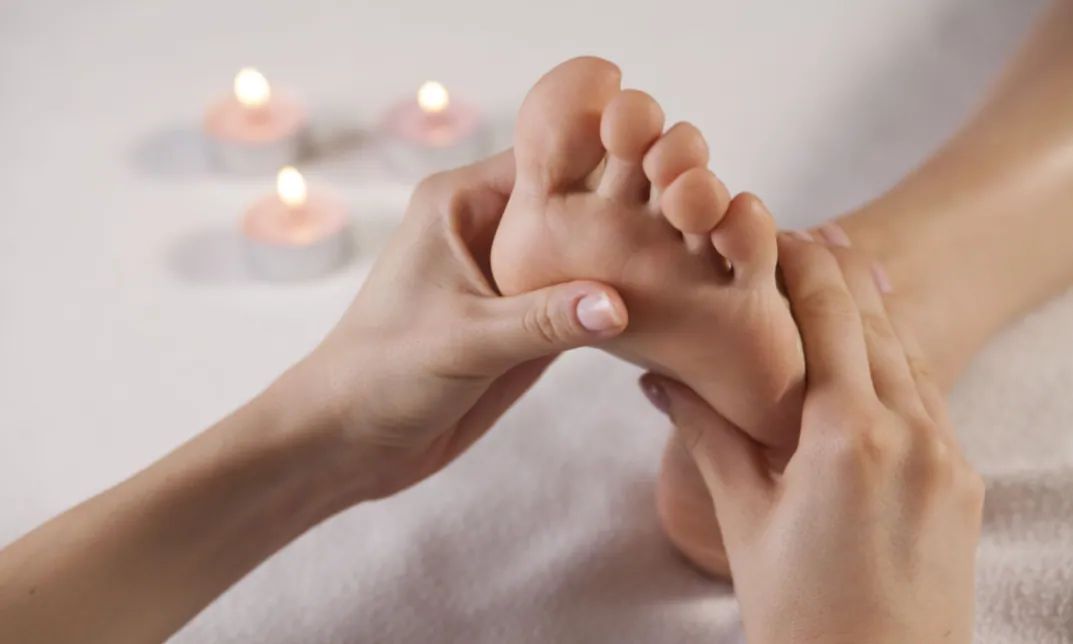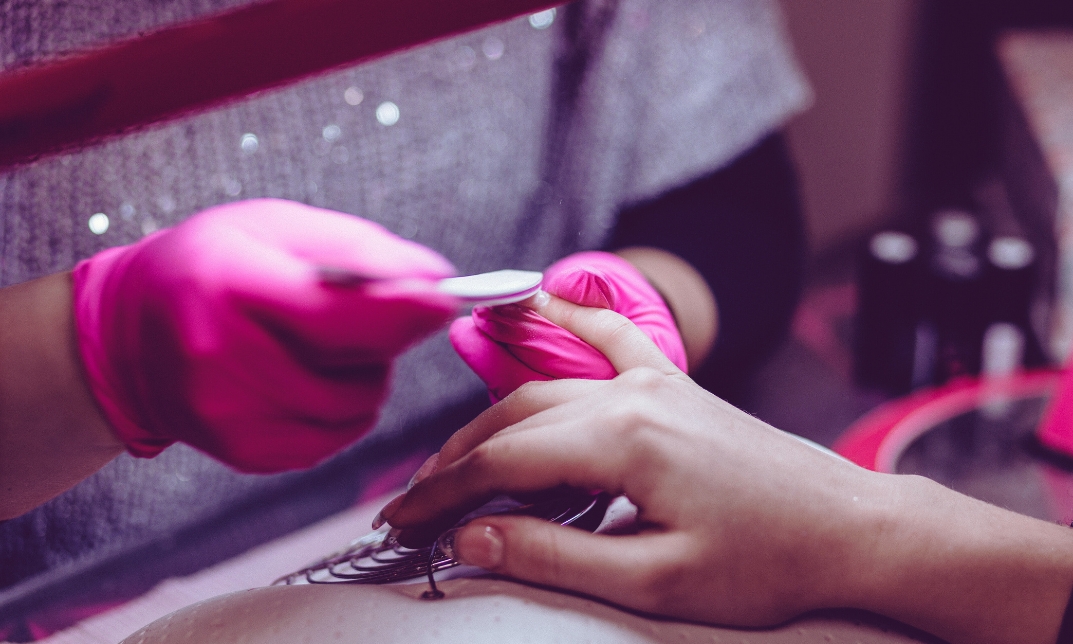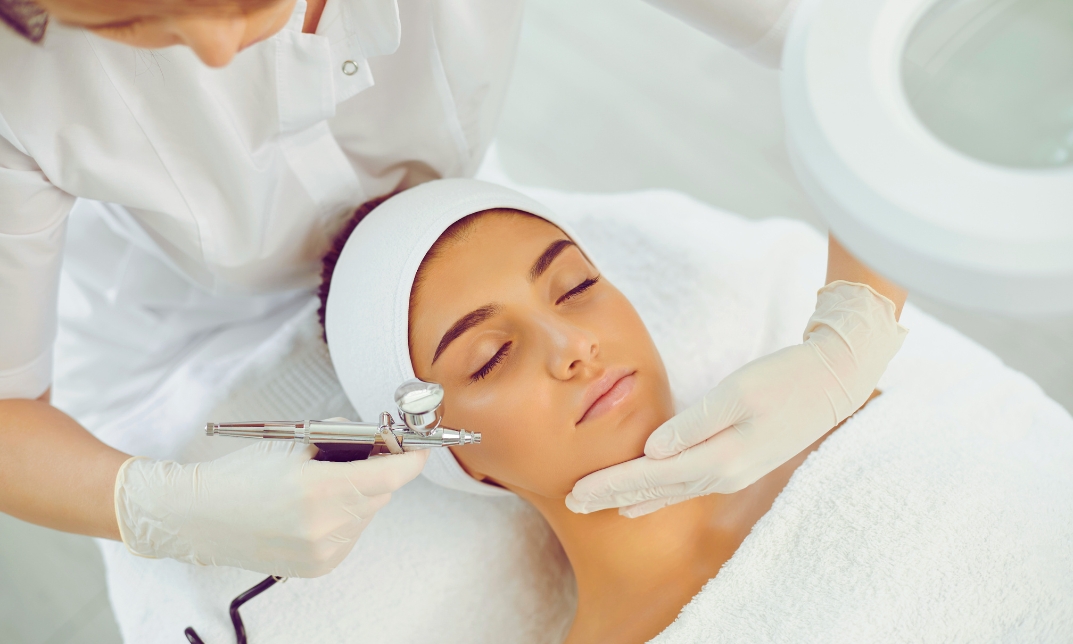If you’ve ever felt run-down, tense, or just not quite yourself, you’re not alone. Life can be busy and stressful — work, family, and endless to-do lists can leave your body feeling tired and your mind overworked. That’s one reason more people across the UK are turning to therapies like reflexology to restore balance and wellbeing. As awareness grows, many are discovering the 10 Benefits of Reflexology that help them unwind and feel more in tune with their bodies.
Reflexology offers a gentle, natural way to relax, recharge, and reconnect with your body. It’s not about quick fixes or medical treatments. Instead, it’s about giving your body the space to rest and reset.
In fact, recent surveys show that nearly one in five adults in the UK has tried some form of complementary therapy, with reflexology among the top choices for stress relief. In a country where stress, anxiety, and fatigue affect millions of people, that kind of support can make a big difference.
Let’s explore what reflexology is, how it works, and the ten key benefits that make it such a popular therapy today.
What Is Reflexology?
Reflexology is a type of complementary therapy where a practitioner applies gentle, controlled pressure to specific areas of your feet, hands, or sometimes ears. These areas, often called “reflex points,” are thought to link to different parts of the body — like organs, glands, and systems. The idea is simple: by working on these reflex points, a reflexologist aims to encourage relaxation, support natural healing, and help your body find balance.
Even if you don’t focus too much on the theory, reflexology can still be deeply relaxing. Imagine lying back in a calm room, lights low, soft music playing, and someone easing tension from your feet with slow, rhythmic movements. It’s a quiet escape that helps both your body and mind slow down.
In short, reflexology helps your body switch from “fight or flight” mode into “rest and digest” — the state where true relaxation happens. If you’re curious about how this soothing therapy can support your wellbeing, explore our full guide: 10 Benefits of Reflexology — and discover why so many people are making it part of their self-care routine.
How Does Reflexology Work?
When you have a reflexology session, the therapist uses their fingers and thumbs to apply pressure to certain parts of your feet. Each area is mapped to different organs or systems in your body. For example:
- The ball of the foot is linked to heart and chest.
- The arch connects to the digestive system.
- The heel links to the lower back and intestines.
By stimulating these areas, the therapist aims to improve energy flow and reduce blockages — though in modern terms, we might simply say it helps improve circulation, calm the nervous system, and release tension.
A reflexology session lasts around 30 to 60 minutes. Most people find themselves drifting into a light, meditative state. It’s a moment to pause — something that’s rare in everyday life. Even if you don’t buy into all the reflex maps, the hands-on relaxation itself is valuable. The gentle massage increases blood flow, eases muscle tightness, and helps your brain switch off from constant activity.
10 Benefits of Reflexology
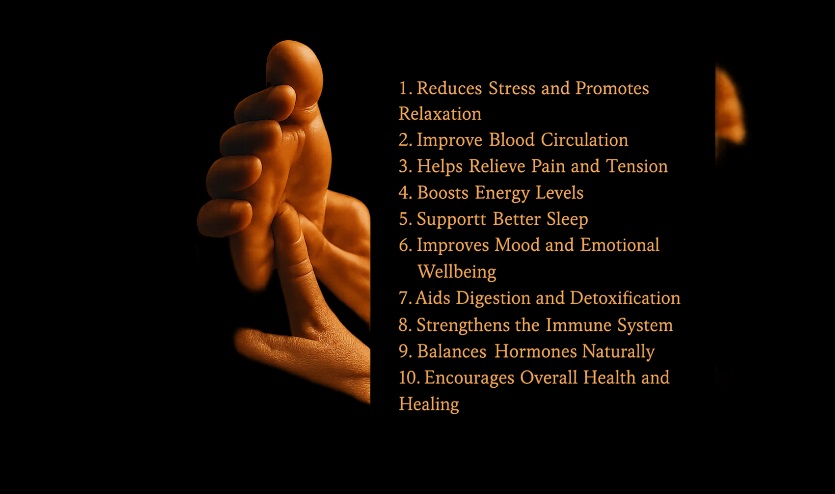
1. Reflexology Reduces Stress and Promotes Relaxation
This is probably the main reason people book reflexology.
Modern life keeps us constantly switched on — phones buzzing, deadlines approaching, thoughts racing. That kind of constant stimulation triggers the body’s stress response. Your heart rate rises, your muscles tense, and your sleep quality drops.
Reflexology helps reverse that. By focusing on pressure points in the feet, it encourages your body’s natural relaxation response — sometimes called “rest and digest.” After a session, many people notice:
- Their breathing slows down.
- Muscles feel looser.
- Thoughts stop spinning.
Less stress means better mood, fewer headaches, and even lower blood pressure.
2. It Improves Blood Circulation
When blood flow improves, everything else works better — from your skin to your muscles to your brain.
The rhythmic, massage-like movements used in reflexology stimulate small blood vessels near the surface of the skin, especially around the feet and ankles. This helps oxygen and nutrients reach cells more efficiently. Better circulation also helps the body remove waste products such as lactic acid, which can build up after stress or long days on your feet.
So while it’s not a medical treatment for circulation problems, reflexology can support healthy blood flow and help your body feel lighter and more energised.
3. It Helps Relieve Pain and Tension
Pain is often a signal that your body’s under stress. Whether it’s a tight neck from computer work or aching legs from long hours, tension builds up quietly until you really feel it.
Reflexology encourages your muscles to release that tightness. Many people report less tension in the neck, shoulders, or lower back after a few sessions. When your body relaxes, your pain signals calm down too. Reflexology doesn’t claim to cure chronic pain, but by easing muscle tightness and improving circulation, it can make discomfort more manageable.
That’s why it’s often used alongside physiotherapy or massage — it supports the body’s natural recovery process.
4. It Boosts Energy Levels
Have you ever noticed how drained you feel after long days of stress or worry? That’s because your body spends energy just keeping up with tension. Reflexology helps break that cycle. By calming the nervous system and improving rest, your body can use its energy more efficiently. After a session, people often say they feel “lighter,” “brighter,” or simply more awake. It’s not like a caffeine rush — it’s a calm kind of energy that comes from finally letting your body rest properly.
When your energy is balanced, daily tasks feel easier, and motivation starts to return naturally.
5. It Supports Better Sleep
Poor sleep can make everything feel harder — your mood dips, your concentration fades, and even your immune system weakens.
Reflexology can help by relaxing your mind and body before bedtime. It lowers stress hormones like cortisol and supports the release of feel-good hormones such as serotonin. When your nervous system slows down, your body naturally prepares for rest. People who struggle with sleeping or staying asleep often find that a few evening sessions help them unwind enough to drift off more easily.
For anyone dealing with insomnia caused by stress, reflexology can be a gentle and natural part of a better bedtime routine.
6. It Improves Mood and Emotional Wellbeing
Touch is powerful. Human contact in a calm, safe setting can lift your mood, ease anxiety, and remind your body that it’s okay to relax. During reflexology, your brain releases endorphins — natural chemicals that boost happiness and reduce pain. Add that to the peaceful atmosphere — soft lighting, quiet music, and a focused therapist — and you have a space where your emotions can settle.
Many people leave a reflexology session feeling not just relaxed but emotionally lighter, too. For those feeling wound-up, low, or overwhelmed, it can be an important form of emotional reset.
7. It Aids Digestion and Detoxification
When you’re stressed, your body shifts energy away from digestion. That’s why anxiety often leads to stomach problems or bloating. Reflexology helps bring your body back to balance. The pressure on reflex points linked to the stomach and intestines can stimulate the digestive system.
When your body is relaxed, digestion works more smoothly. It’s not about “detoxing” in a trendy sense — it’s about supporting natural processes like nutrient absorption and waste removal. People who get tense stomachs when anxious often find that regular reflexology helps things settle down again.
8. It Strengthens the Immune System
Stress weakens the immune system — that’s well known.
By helping your body relax and rest, reflexology may indirectly support immune function. When you’re less anxious and sleeping better, your body has the time and energy it needs to repair and defend itself. It’s not about boosting immunity magically; it’s about giving your body the conditions it needs to work properly. Reflexology can become part of a healthy lifestyle that keeps you resilient during cold months or stressful times.
9. It Helps Balance Hormones Naturally
Hormones control mood, energy, and even digestion. But stress, diet, and lifestyle can throw them off.
Reflexology aims to restore balance. It’s especially popular among people managing PMS, menopause symptoms, or stress-related hormone imbalances. It’s not a medical replacement for hormone therapy, but regular sessions can ease symptoms like mood swings, fatigue, and irritability by calming the stress response. When your body feels balanced, you notice the difference — you’re more grounded, calm, and emotionally steady.
10. It Encourages Overall Health and Healing
At its heart, reflexology is about awareness — tuning into your body and how it feels. When you take an hour to rest, breathe, and connect with yourself, you notice what your body needs. Maybe it’s more water, more stretching, or simply more downtime.
Reflexology gives you that quiet moment to listen. Over time, that awareness leads to better self-care — small choices that keep your body and mind healthier. It’s not just about what happens during the session. It’s about how you carry that calmness into the rest of your life.
What to Expect During a Reflexology Session
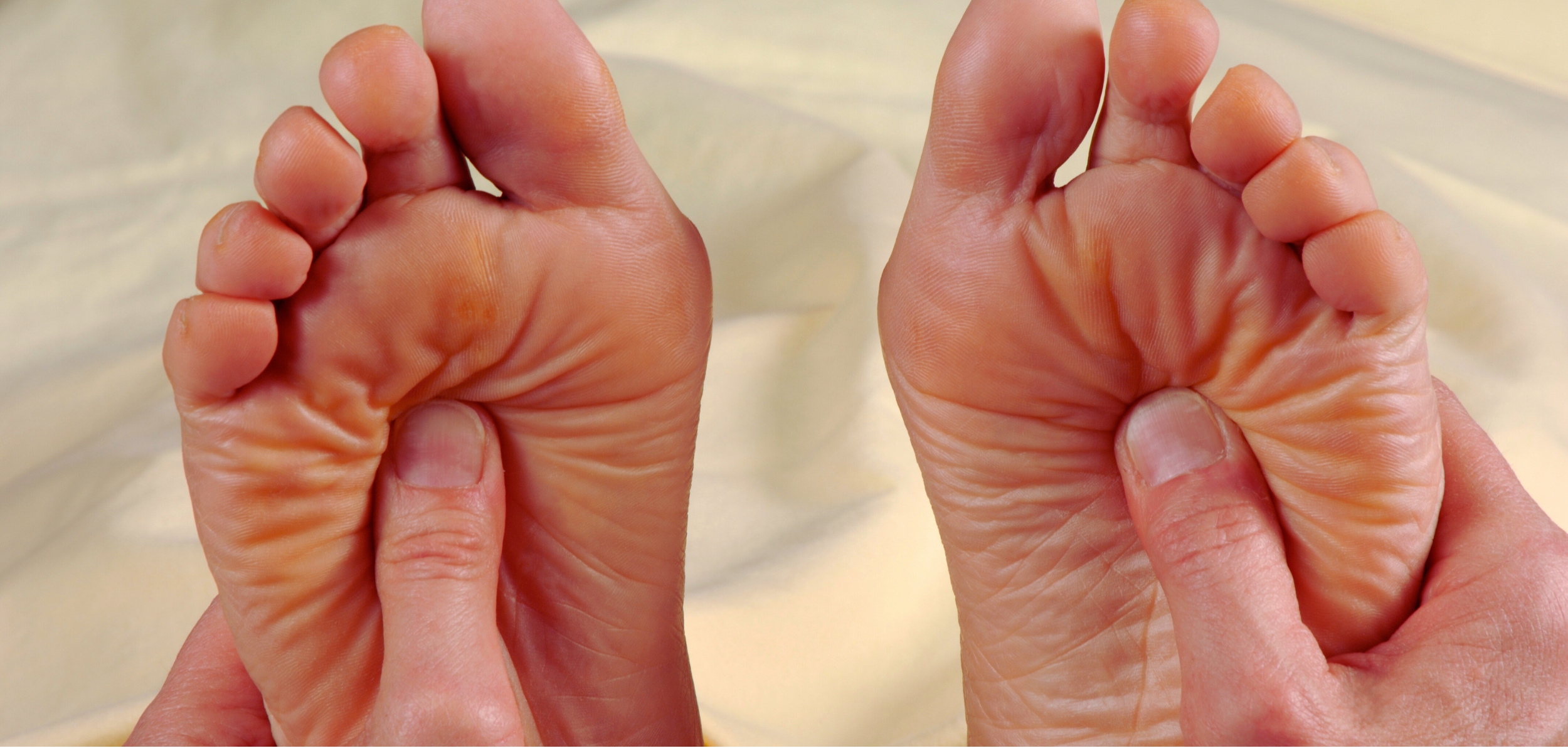
If you’ve never had reflexology before, you might wonder what actually happens. It’s very simple and comfortable.
You’ll usually start by sitting or lying down in a reclined chair. You keep your clothes on — only your shoes and socks come off. The practitioner then works on your feet using their hands, applying gentle pressure to different points. Each person’s experience is slightly different. Some feel tingling, warmth, or waves of calm. Others simply drift off into deep relaxation.
After the session, it’s normal to feel light, sleepy, or even a little emotional. That’s your body processing the shift from tension to rest. Drinking water and taking it easy afterwards helps extend the benefits.
How Often Should You Have Reflexology?
There’s no strict rule. Some people go once a week, others once a month. If you’re using reflexology to manage stress, regular sessions help you maintain that calm, balanced feeling. The key is consistency — giving your body that reminder to slow down, breathe, and reset.
Who Can Try Reflexology?
Most people can safely enjoy reflexology, including:
- People dealing with stress or anxiety
- Those who have trouble sleeping
- Office workers with tense shoulders or backs
- Parents juggling work and family life
- Older adults wanting gentle, non-invasive relaxation
However, if you have certain health conditions like diabetes, circulatory problems, or you’re pregnant, it’s always best to speak with a healthcare professional before starting any new therapy.
How to Learn Reflexology Professionally
If reflexology sounds interesting not just for personal use but as a career path, there’s a great way to start — through a CPD-accredited Reflexology Course at the School of Health Care.
This course teaches you everything from anatomy and pressure techniques to client care and professional ethics. You’ll learn how to deliver safe, effective treatments that help others relax and restore balance. The course is flexible, online, and recognised across the UK — perfect for anyone who wants to train at their own pace while working or managing other commitments. Whether you’re aiming to open your own wellness practice, add reflexology to existing therapy skills, or just deepen your understanding of holistic health, this is the ideal first step.
The Growing Popularity of Reflexology in the UK
Reflexology has quietly become one of the most requested complementary therapies in the UK. You’ll find it in spas, wellness centres, and even some hospitals offering relaxation sessions for patients. Its popularity keeps growing because it’s accessible — no needles, no equipment, just human touch and calm attention. It fits perfectly into the modern need for natural, gentle stress relief.
With stress being one of the top reasons people visit GPs in the UK, more people are looking for safe, supportive therapies that help them unwind without side effects. Reflexology fits that need beautifully.
Why People Keep Coming Back to Reflexology
The main reason people return again and again? It simply makes them feel better. There’s something grounding about having your feet worked on — they carry you all day, after all. Reflexology gives them the care and attention they rarely get.
It’s 60 minutes where everything slows down. No screens, no conversations, no pressure to “do.” Just stillness, warmth, and connection. People leave sessions saying things like:
- “I feel like I can breathe again.”
- “I didn’t realise how tense I was until it started to melt away.
That feeling is what keeps reflexology popular — it’s simple, safe, and genuinely soothing.
Final Thoughts: Why Reflexology Deserves a Place in Your Routine
Reflexology might sound small — just working on the feet — but the effects reach much further.
It helps your whole body reset. Stress eases, sleep improves, and energy returns. It’s a way to slow down in a world that rarely gives you time to rest. Whether you try it for relaxation, tension relief, or emotional balance, it’s an experience worth having.
And if you ever feel inspired to turn that experience into a skill, the Reflexology Course from the School of Health Care can teach you how to help others find that same sense of calm and wellbeing.
Reflexology proves something simple but powerful — when you care for the body, the mind follows.
10 benefits of reflexology: FAQs
What can a reflexologist tell from your feet?
A reflexologist may detect areas of tension, imbalance, or congestion in your body by feeling sensitive points on the feet, which correspond to different organs.
What are the positive effects of reflexology?
Reflexology can promote deep relaxation, improve circulation, reduce stress, enhance mood, and support overall wellbeing by helping the body restore its natural balance.
Does the NHS recognise reflexology?
While the NHS doesn’t officially endorse reflexology as a medical treatment, some hospitals and clinics offer it as a complementary therapy for relaxation and stress relief.
How long does it take to see results from reflexology?
Many people feel relaxed after one session, but noticeable improvements in sleep, stress levels, or energy often occur after three to six sessions.
What happens the day after reflexology?
You may feel deeply relaxed, sleepy, or more energetic. Occasionally, mild detox effects like increased urination or temporary tiredness occur as your body rebalances.
What is a red flag in massage?
Red flags include unexplained pain, rashes, swelling, fractures, or any condition that worsens with touch—these should be assessed by a healthcare professional before treatment.
Can a massage therapist massage the groin area?
Only with explicit informed consent and for therapeutic purposes such as treating tight hip or adductor muscles. Professional boundaries must always be maintained.
What are the 5 basic manipulations of massage?
The five are effleurage (stroking), petrissage (kneading), friction, tapotement (percussion), and vibration—each enhances circulation and relaxation in different ways.
What is a red flag that must always be reported immediately?
Sudden pain, numbness, dizziness, shortness of breath, or any unexpected symptom during treatment must be reported to the therapist right away.

